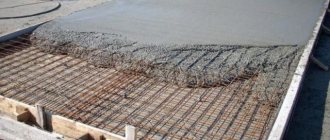Plastic is actively used for the manufacture of window systems. High-quality material has a long service life and beautiful appearance. However, during operation, some users encounter certain difficulties. The windows are starting to fog up. It is worth understanding what causes such a negative phenomenon and how it can be prevented.
Double-glazed window installation
To understand the reason for the appearance of condensation, let’s look at the design features of such blocks. They include:
- The frame that is the basis of the system. To make the frame, a hollow plastic profile of suitable width is used. The geometric parameters of the window frame directly depend on the design of the double-glazed window. The base material is reinforced with aluminum to increase strength characteristics.
- A double-glazed window consisting of one or more glasses connected to each other layer by layer while maintaining an air gap between the layers. The thermal insulation properties of an element directly depend on the number of layers. The choice is made taking into account the climate zone and the purpose of the room for which the plastic windows are intended. For residential premises, as a rule, 2-3-chamber structures are chosen. For northern regions, 4–5 chambers are preferable, as they allow better heat retention inside the house.
- Fittings that ensure opening/closing of the sash during operation, if provided for by the design. This also includes handles and locks. Sometimes plastic windows are made blind, without the presence of sashes. The functioning of such structures does not require fittings.
- Additional details, which include slopes, strips, window sills. Plastic is also used to make them. The characteristics and geometric parameters directly depend on the installation location and the size of the window opening.
Attention! Made from high-quality raw materials in compliance with regulatory requirements, the double-glazed window is completely sealed.
Origin of condensate
As mentioned above, water forming on the surface of a glass unit (window) is called condensation. Condensation is the transition of water from a vapor state to a liquid state. The colder the room side of the glass unit, the greater the likelihood of condensation forming on it. Also, the likelihood of windows fogging is affected by the humidity in the room.
If we explain this from the point of view of physics, then there is such a thing as dew point . Dew on the grass occurs because in the morning the air temperature rises faster than the temperature of the grass, and at the moment when the temperature of the grass reaches the “dew point”, the vapor in the air settles on its surface, forming drops. Fogging of windows has the same nature.
Using this table, you can determine the surface temperature of the glass unit at which condensation will form on it. As mentioned above, this value depends on two factors: the air temperature in the room and the humidity in the room. You can measure the humidity in a room with a hygrometer.
| Vl./t | 2,5 | 5 | 7,5 | 10 | 12,5 | 15 | 17,5 | 20 | 22,5 | 25 | |
| 20 | -20 | -18 | -16 | -14 | 12 | -9,8 | -7,7 | -5,6 | -3,6 | -1,5 | -0,5 |
| 30 | -15 | -13 | -11 | -8,9 | -6,7 | -4,5 | -2,4 | -0,2 | 1,9 | 4,1 | 6,2 |
| 40 | -12 | -9,7 | -7,4 | -5,2 | -2,9 | -0,7 | 1,5 | 3,8 | 6,0 | 8,2 | 10,5 |
| 50 | -9,1 | -6,8 | -4,5 | -2,2 | 0,1 | 2,4 | 4,7 | 7,0 | 9,3 | 11,6 | 13,9 |
| 60 | -6,8 | -4,4 | -2,1 | 0,3 | 2,6 | 5,0 | 7,3 | 9,7 | 12,0 | 14,4 | 16,7 |
| 70 | -4,8 | -2,4 | 0,0 | 2,4 | 4,8 | 7,2 | 9,6 | 12,0 | 14,4 | 16,8 | 19,1 |
| 80 | -3,0 | -0,6 | 1,9 | 4,3 | 6,7 | 9,2 | 11,6 | 14,0 | 16,4 | 18,9 | 21,3 |
| 90 | -1,4 | 1,0 | 3,5 | 6,0 | 8,4 | 10,9 | 13,4 | 15,8 | 18,3 | 20,8 | 23,2 |
| 100 | 0,0 | 2,5 | 5,0 | 7,5 | 10,0 | 12,5 | 15,0 | 17,5 | 20,0 | 22,5 | 25,0 |
| On the left is the percentage of humidity in the room. Above is the temperature in the room. | |||||||||||
Quite often the question is asked: why did the old windows not sweat, but the new windows sweat? The fact is that Soviet carpentry windows have a large distance between the glasses in the frames, for this reason the glass that is in the room has a higher temperature than the same glass in a single-chamber double-glazed unit. But this does not mean at all that old carpentry windows are warmer.
Most often, people who encounter this problem complain to the company from which they purchased PVC windows. They believe that they were sold a low-quality product or that mistakes were made when installing the windows. The main argument is that this never happened with old windows. And explaining to the client that it is not the company’s fault is quite problematic. Although in fact, due to the fault of companies, this happens only from two to five percent of all cases. In all other cases, certain factors are most often to blame, and sometimes a combination of several of them provokes the occurrence of condensation.
Having figured out where condensation comes from, we will understand why plastic windows sweat. Condensation is a liquid that appears on the surface of a plastic window. This process itself is the transformation of water and vapor state into liquid state. The lower the temperature of the side of the glass unit that is located in the room, the higher the likelihood of condensation occurring on the surface of the glass. The humidity level in the room can also cause windows to fog up.
In the science of physics there is such a phenomenon as the dew point. Dew in the morning occurs due to the fact that the air around it warms up faster than the air that is near the grass and the moment comes when the temperature near the grass reaches the so-called “dew point”. It turns out that water vapor settles on the grass, and thus drops are formed. PVC windows sweat due to the same nature.
The question often arises: why did the previous windows not fog up, but the new ones fog up? The reason is that the windows, installed back in Soviet times, have a large gap between the glass that is in the frames. Due to this, the glass located on the side of the room has a temperature higher than the glass in a double-glazed window, especially a single-chamber one. But this does not mean that Soviet windows retained heat better. There are a number of reasons why plastic windows sweat. Below we will look at them and give practical advice on how to eliminate them.
The first reason is a single-chamber double-glazed window
When purchasing a plastic window, you should not try to save money on it. Since the likelihood of condensation appearing in a single-chamber double-glazed window is many times higher. In order to solve this problem, it must be replaced. Please note again that not the entire window needs to be replaced, only the glass unit.
Reasons for fogging of windows in apartments and private houses
In the off-season and winter, condensation begins to appear on plastic windows. The reason for such an undesirable process for every user can be found in the field of physics. There is inevitably some amount of water vapor in the air of every room. Once in close proximity to the glass surface at a point corresponding to the dew point, they begin to condense.
As a result, tiny droplets first appear on the surface. Gradually uniting, they turn into larger ones. As soon as their size reaches a critical size, the drops begin to flow down. Seeing this phenomenon, many people say that the window is “crying.” The process can take place both inside the apartment and outside. In some cases, condensation forms inside the glass unit. Let's consider each option separately in order to understand in detail the causes of negative processes.
Outside the glass unit
If ice appears on the outside of the window unit in winter, then we can safely talk about the appearance of condensation on the outside. According to a number of experts, this phenomenon clearly indicates that the dew point is located outside the house, and therefore the window effectively copes with the task, retaining heat inside the house. At the same time, in their opinion, the ice itself is not capable of harming the plastic frame and double-glazed windows, since water-resistant materials are used for their manufacture. In addition, due to low tides, water when the ice melts will end up on the ground.
This opinion can safely be called erroneous. Firstly, the very fact of the appearance of ice indicates that there is a heat leak, and therefore the window unit does not cope with the task of energy saving as effectively as we would like. Secondly, not only the plastic window, but also the material used to make the walls may face negative consequences. For example, a brick is initially designed for a certain number of freezing cycles. After exceeding the declared value, the brick begins to collapse. Rainy weather in winter speeds up the process. Condensation works in a similar way.
That is why it is important to determine the reason that causes the windows to fog up on the outside. It may lie in:
- Poor insulation of the space between the installed frame and the wall. If the craftsmen did not fill in enough foam during the installation process or did it with tears;
- Poor quality thermal insulation of slopes, which occurs when installing a narrow window in a wide opening;
- Loss of tightness between the glass unit / sash or frame / sash;
- Incorrect spatial orientation of the frame in the window opening. If the frame is shifted inside the apartment, then in this case the dew point also shifts. As a result, it ends up not inside the window system, but outside the house.
Attention! When performing design work, the dew point is inside the wall. Due to this, it is possible to prevent the appearance of condensation inside and outside.
Inside
The most unpleasant option that a user may encounter. Water inside the glass unit appears due to:
- violations of production technology, which resulted in depressurization of the double-glazed window;
- profile deformation during installation work;
- cracking of glass, which sometimes occurs when transporting elements of a window system to the installation site or misalignment of the frame during installation.
Depressurization of a double-glazed window occurs at the production and installation stage. This is due to:
- loss of geometry by the frame, which results in deformation of the glass unit;
- poor fixation of sealant between glasses;
- low quality sealing material;
- violations of installation technology;
- installation errors that led to distortion of the glass unit.
In warm weather, this problem is not noticeable. Condensation begins to form in the off-season. If such a problem occurs, you should contact the manufacturer.
From the inside
Condensation rarely forms inside or outside the window. Most often, windows begin to fog up from the inside. The reason for this lies in:
- violation of installation technology;
- changing the microclimate inside the house after installing a plastic window;
- installing a single-chamber package.
The main mistakes made when performing installation work include:
- incorrect measurement of the window opening before manufacturing the window block. As a result, the installed frame does not have sufficient contact with the wall;
- poor adjustment of clamping force;
- poor quality of technological gaps between the wall and frame;
- lack of thermal insulation on slopes and window sills;
- violation of technology when installing a window sill.
We invite you to watch a video that explains the reasons for the appearance of condensation on plastic windows:
Windows sweat: main reasons
If the window is fogged up, it is important to find the root cause of the condensation. In this case, it will be possible to avoid recurrence of dampness. Experts name several prerequisites that contribute to fogging of a double-glazed window. To calculate which cause occurs in a particular case, it is necessary to review the entire list using the method of elimination.
High humidity
The microclimate in an apartment is determined by several factors, among which air humidity occupies one of the leading positions. Normally, this figure should be 50-65%. The amount of water vapor is influenced by the operation of household appliances (washing machine, air conditioner, microwave), people’s breathing, cooking, showering, and air flow from the street. If the air humidity has increased, you may notice that the window surface has fogged up.
The temperature in the rooms also matters. Foggy windows are more likely to cause concern in the winter. The surface of the window glass cools, and this promotes condensation. This phenomenon is known as the “dew point”. At the same time, northern windows suffer more than southern ones when there is high humidity in the room.
Battery too far
Room temperature is determined by the operation of the heating system in the house. Warm air from the batteries rises from the bottom up and heats the surface of the glass, thereby preventing condensation from forming. If the heating element does not provide enough heat or is located on the side of the window, the glass fogs up. The situation is aggravated if the battery is moved to another part of the room and it is located away from the window.
The reason may also be hidden in a large window sill, which covers the heating battery, blocking the flow of warm air. If you want to have a wide window sill, the frame is recessed into the opening, and the window fogs up due to the disruption of air circulation. In this case, even increasing the heater power does not help.
The room is not ventilated or the ventilation is poor
The ventilation system in the bathroom and kitchen is designed not only to eliminate odors, but also to regulate air humidity. With proper ventilation and periodic airing of the premises, water vapor “leaves” along with the air flow. Their concentration is kept at an optimal level. A foggy window may indicate a system malfunction or insufficient ventilation time.
Even in cold weather, it is necessary to open the shutter or window for at least 30 minutes a day. In good weather conditions, the ventilation period is not limited. The cause of condensation may also be the absence or breakdown of a micro-ventilation system.
Plants
Natural processes in green plants (gas exchange, transpiration) correct the state of the microclimate in the room. The more indoor flowers there are, the stronger this influence is. The reason is partly also related to watering the plants. When the soil is moistened and lush bushes are sprayed, some of the water evaporates, increasing the concentration of vapors in the air.
This problem is especially relevant in winter gardens that are installed inside the building. A modest floral assortment is rarely the main source of glass fogging, but it makes its provocative contribution to a problematic situation.
Period after repair
Construction and renovation of a house naturally entail an increase in air humidity. And not only during the process itself, but also for a long time after the completion of the case. Plastering, priming, gluing - all types of repair and finishing work leave behind damp surfaces.
It takes some time for them to dry. During this period, windows sweat, since ventilation according to technology requirements is not always possible. Temporary fogging of a double-glazed window is not so problematic; you just need to wait for the coating to dry completely and the problem will disappear on its own.
The internal insulation of the room can lead to fogging of the glass on the window. Improper installation of thermal insulation prevents vapors from being absorbed and released outside.
Incorrect installation or design defects
If no reasons for the appearance of condensation are found inside the apartment, it is necessary to check the quality of the window installation and the sealing of the perimeter. Violations of installation rules, poor sealing of cracks in the area where the frame adjoins the window opening can result in glass overcooling. Defects in the plastic window itself lead to the same consequences. In this case, the appearance of water drops on the glass is guaranteed. Only replacement or repair of the structure will help eliminate them.
Unsuitable glass unit
When plastic windows sweat for no apparent reason, it is worth assessing not only the quality of installation, but also finding out the class of the double-glazed window itself. The single glass design cools very quickly when the weather worsens. When there is a noticeable difference between the internal and external temperatures, drops of water occur on the window surface.
In regions with cold, long winters, it is not advisable to install single-glazed windows in houses, as they do not protect well from low temperatures. To avoid fogging, it is necessary to purchase designs with double or triple glazing.
The thickness of the outer layer in a double-glazed window must be at least 6 mm, and the gap between the glass panels must be no more than 2 cm.
Seals
Another reason directly related to the plastic window itself is the quality of the seals. The edge of the glass is a risk area, since through this border cold air can penetrate into the room. Not only does the perimeter fog up first, but it may even become covered in ice crystals. Rubber frames eliminate this problem. But if their condition has worsened for objective reasons or the seal was initially weak, this will cause condensation in the future.
Seals must be made of frost-resistant polymer materials.
Operating seasonal mode
The design of most modern models does not imply the presence of a window. However, it includes a seasonality system that helps regulate ventilation during the warm and cold periods of the year. The tilt and turn mechanism allows you to open the doors in different modes. If the system is unbalanced, then this is fraught with drafts. A breakdown or neglect to adjust the seasonality mode leads to the window sweating.
If in the frosty months they use the “light” summer mode, then cold air penetrates inside through the loose connection of the valves. Winter mode ensures a tight fit of the seal. But when using this position in the summer, the rubber wears out faster. In both cases, the end result is a violation of the window's thermal insulation and condensation.
Getting rid of condensation
To combat condensation, you can use special means. They are quite easily applied to the surface, forming a high-quality protective film. Manufacturers suggest using a spray, aerosol, or liquid. The release form does not affect the effectiveness, but only determines the ease of use. The composition of the special products is selected in such a way as to remove condensation without damaging the plastic from which the windows are made. There is no need to worry about the appearance of characteristic streaks and stains after treatment.
Attention! You should start processing glass only after the microclimate in the room has normalized. Otherwise, condensation will very soon appear on the windows again.
If it is not possible to purchase a special product, you should pay attention to folk remedies. These include:
- Glycerin, which is applied to previously washed glass with soapy water and thoroughly dried. To prepare the solution, mix alcohol and glycerin in a ratio of 20 to 1. The alcohol will evaporate quickly enough, and the glycerin will form a thin protective film that protects well from the appearance of condensation;
- Newspapers. When washing windows, many housewives carefully wipe the window with newspapers to give them a characteristic shine and get rid of the characteristic stains remaining on the surface of the glass. This method is also effective in combating condensation, since the printing ink applied to the surface of the paper has special properties that provide a water-repellent effect on the glass surface.
- Soap. To combat condensation, the glass is first thoroughly washed. Then draw a mesh with a piece of soap and rub it thoroughly with a dry cloth, completely getting rid of traces. Similarly, you can protect a mirror from condensation in the bathroom.
Why do the windows in your house sweat: 10 tips to combat condensation
Table of contents:
- Where does moisture come from in the house?
- How to prevent fogging
- What to do if installed metal-plastic windows fog up?
Often, during the cold season, a cloudy water mist forms on plastic windows. This is condensation, which impairs visibility, reduces light output and promotes the formation of fungi and mold.
Condensate (lat. condensatus - compacted, condensed) is a product of vapor condensation that occurs during the transition of a substance during cooling from gaseous to liquid form. It forms if there is excess “water” in the air and the temperature outside is low.
Fogging is the formation of water on the surface of a window. Actually, this water is called condensate. It occurs in situations where the air temperature in the room is higher than the air temperature directly near the window. The appearance of water droplets on your double-glazed windows is also affected by the level of humidity in the room. Accordingly, the colder the double-glazed window and the higher the humidity, the more often and more strongly the windows fog up.
Very often the question and complaint is heard: “Wooden windows didn’t sweat, why do the plastic windows you installed sweat a lot?!” The fact is that Soviet windows with wooden profiles have a greater distance between the outer and inner glass - therefore, the glass on the side of the room has a temperature higher than the outer one. Which does not mean that wooden windows have better thermal insulation than PVC windows.
How can I prevent fogging in the future?
If condensation does form, it is worth considering some measures for the future to prevent fogging of plastic windows. Reducing the humidity level is mandatory. To do this you should:
- Purchase a device that absorbs water vapor. It can be easily found in any specialty store. The cost of the device is relatively small, and therefore it is accessible to every family.
- Regularly ventilate the entire apartment to reduce humidity levels. If the house is warm, the sash can be left to air for the whole day.
- Remove flowers from the windowsill in the winter, as they are a source of excess moisture.
- Turn on the hood while cooking dinner. Intensive formation of condensation is promoted by a simultaneous increase in the level of humidity and air temperature.
- Dry clothes on the balcony or street. You should not use the interior space of the room or the battery for this.
- Keep the ventilation shaft and battery open. In this case, it will be possible to ensure uniform heating of the air in the room and convective heat exchange.
- Install a ventilation grill into the wide window sill, which will ensure the free passage of warm air.
- Control the degree of heating of the heating batteries. If it is not possible to eliminate the problem through the efforts of utility workers, it is worthwhile to provide additional heat sources. A “warm floor” system or standard electrical heating appliances will cope with the task perfectly.
- When installing, choose a higher-quality window design, the design of which was initially designed to prevent condensation from forming on the surface of the glass. So, for 4-5-chamber PVC windows, the thickness should be at least 7 cm. If the transverse dimensions are smaller, condensation will form more intensively.
- Form a protective film on the glass surface that will not allow the smallest drops of water to settle on the glass. To clean the window, you should use napkins made of suitable materials. With a competent approach and a suitable combination, you will definitely be able to prevent fogging of plastic windows.
- Treat the glass with an alcohol solution of glycerin. Acting as an antifreeze, such a composition prevents the formation of a protective film on the surface, preventing not only fogging, but also freezing of the glass.
Possible scenarios for moisture occurrence
Most homeowners believe that foggy windows are normal, because it’s cold outside, but it’s warm in the house, so so be it. However, it is not. Condensation helps
the formation of mold, the vapors of which are dangerous.
With proper installation, constant room temperature and good quality plastic window frames, there should be no fogging. And the sooner the cause is identified and eliminated, the longer the plastic frames will last; in addition, mold will not appear on the slopes, which spoils the appearance and is hazardous to health.
A sharp temperature change between the street and the house is the main reason for the appearance of condensation on the windowsill.
Air with high humidity in the room comes into contact with cold glass, as a result of which the water changes from a gaseous state to a liquid one.
However, there are other reasons for the appearance of “tears”:
- Fogging in winter. The most common type of condensation. It goes away on its own with the onset of warmth.
- The glass only sweats in the kitchen. This is not surprising - the temperature changes most often in the food preparation area, as a result of which water streaks appear on the windows.
- Fogging occurs only in one room. There may be several reasons: there is a defect in the frame itself during production, incorrect installation of the structure, or a feature of the room (for example, when this happens in the bathroom).
- Fogging of the frame occurs at dawn, and by noon the condensation disappears. This happens on the sunny side. By lunchtime, the sun heats up the glass, it becomes completely dry, leaving only stains that will have to be wiped off daily.
Briefly about window installation
The quality and service life of a window unit directly depends on compliance with production and installation technology. If the user cannot trace the first process, then the installation order can be controlled. This will avoid a lot of problems in the future.
Work begins with careful measurement of the geometric parameters of the window opening. The performance characteristics of the installed window unit directly depend on its quality. After this, you should contact the manufacturer to order a window unit.
Attention! Most often, companies involved in the installation of plastic windows take measurements themselves. It is better to entrust such responsible work to professionals.
The next step is to dismantle the old window unit, if any. You should act carefully to prevent mechanical damage to the window opening. The process is quite dirty and dusty. It is worth covering all pieces of furniture located indoors with construction film in advance.
Next, the window opening and the window itself are prepared for subsequent installation. Double-glazed windows are removed from the blind model. The doors are removed from the swing door. The protective film is removed from the outside, since if the apartment is located in an apartment building on the top floors, this will be quite difficult to do after installation. If necessary, elements for attaching a mosquito net are installed.
The installation ends with installation. At this stage, it is very important to ensure the correct spatial position of the mounted frame. As soon as it takes the desired position, the remaining elements are mounted and the functionality of the structure as a whole is checked. Particular attention is paid to thermal insulation work, since the likelihood of condensation on the glass surface largely depends on their quality. If everything is done correctly initially, there will be no difficulties during operation.
Thus, many people face the problem of window fogging. The reason lies both in natural processes and in the malfunction of ventilation equipment. A high concentration of water vapor in the air causes mold to form on the surface of the window unit, which negatively affects human health. By following the recommendations described above, you can create a comfortable microclimate in your home and significantly extend the service life of the window unit.
Fogging inside the glass unit
For many owners, the appearance of water droplets inside the structure seems to be a more serious problem, since wiping the surface from the inside will not be possible. If a window sweats between the panes, then the reason is exclusively related to the double-glazed window itself.
The accumulation of moisture in the room, problems with the ventilation system, or any other defect does not matter in this case. If a glass unit fogs up inside, the reason is depressurization of the structure due to:
- manufacturing defect;
- occurrence of a defect during installation;
- cracks during operation;
- attaching blinds to the frame.
There is only one way to stop internal fogging - by replacing it. In such a situation, it is not necessary to completely dismantle the structure; it is enough to remove the double-glazed window from the frame and install a new one. This is done by the company's specialists who install plastic windows.
Violation of the convection regime
To decide how to get rid of condensation on windows, you should consider the factor of impaired convection in the room. Even changes in air movement can cause windows to fog up.
Convection consists of raising a warm flow upward and a cold flow downward. If the window were not located above the radiator, it would freeze, collecting condensation on the glass.
If something prevents the battery from heating the space above it, this is already considered a violation in the convection process. When deciding how to get rid of condensation on plastic windows, you should pay attention to the window sill. If it is too wide, the flow of warm air from the battery simply will not reach the glass.
You will have to either replace the window sill, or make holes in its plane so that the flow can move upward.
How can we organize the flow of fresh air into the apartment?
Having understood the causes of fogging, having determined that the double-glazed windows are sweating due to the lack of constant ventilation of the apartment, the question arises of how to organize its supply.
The air that comes from the batteries, when mixed with what was in the room, loses the required level of humidity. To solve the problem, you need to “depressurize” the apartment by organizing the flow of air into it from outside. You should not be afraid that while solving the problem of why the windows sweat, you can freeze in the apartment.
Such an air influx will be minimal; it will not be able to cool the premises to a significant extent. The maximum that the indoor air temperature can drop is 2 degrees.
Important! When the indoor air temperature is at 20 degrees Celsius, you should not worry; if it is lower (about 15 degrees), you should take care of alternative heat sources.
You can organize the air flow like this:
- through a window supply valve;
- via a wall inlet valve.
An air conditioner is not suitable for this purpose; it only works with the air that is inside the room, without supplying it from outside.
Wall valves
Metal-plastic windows, which are covered with condensation from the inside, have high tightness, which is why a similar problem arises. If it fogs up, the problem should be solved by installing wall supply valves. They are not equipped with fans; they simply allow fresh air to enter from the street.
The advantages of such a system:
- installation into the wall, without making changes to the design features of the windows;
- Possibility of installation in a windowless room;
- presence of thermal insulation from the wall;
- retention of dust and insects using a filter or mesh;
- possibility of installation both before and after renovation;
- capacity up to 50 cubic meters meters per hour;
- proper operation at low air temperatures.
The only disadvantages of such a device are the difficulties with installation work; a special device will be required for drilling holes with a diameter of 40 to 133 cm.
A wall inlet valve is a plastic pipe that pierces right through the wall. A grille equipped with a mesh is mounted on its street part. Inside, a block with a damper is attached to the pipe, which regulates the volume of air flow.
Models are equipped with automatic or manual regulators, the first reacts to changes in humidity inside the room, the second is controlled by the owner.











